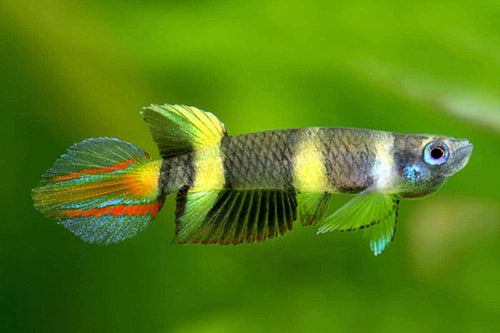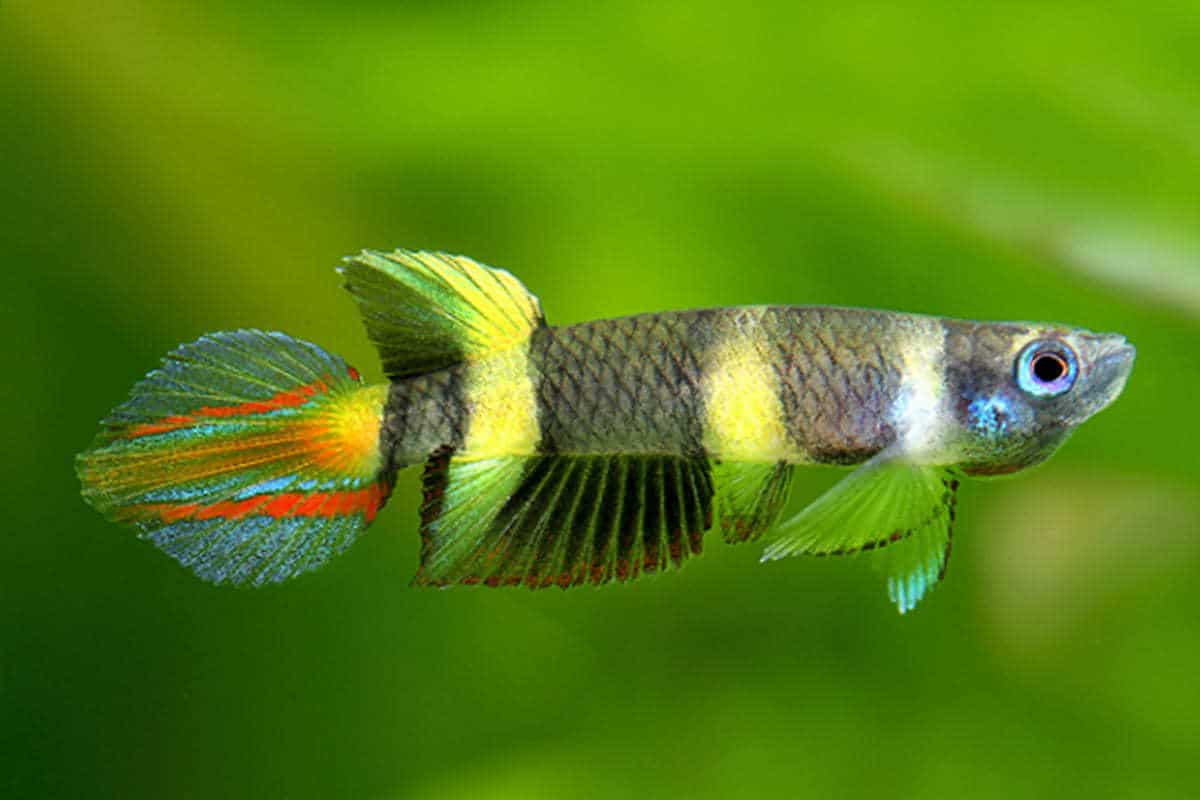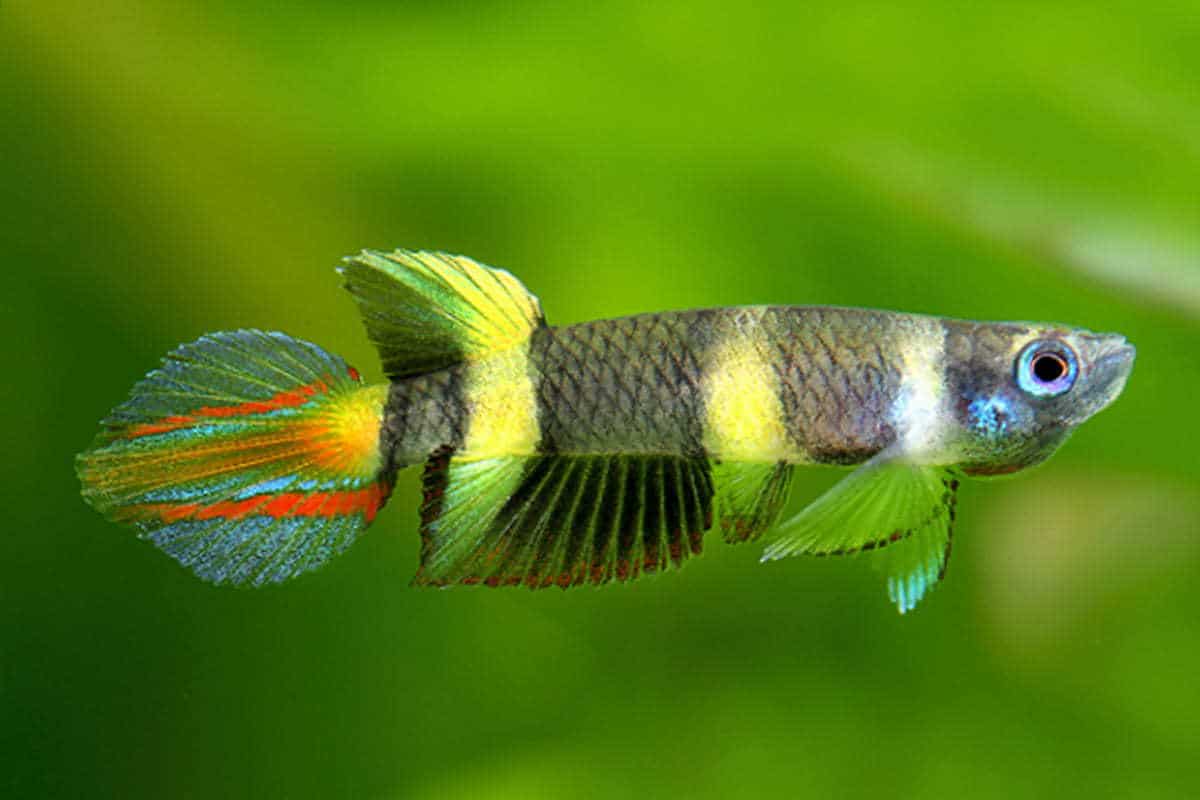Killifish-Clown ≈2cm
Killifish-Clown ≈2cm
check_circle Fast Shipping
check_circle Quality Products
check_circle Affordable Price
Reach out to us on ''available to order'' items via WhatsApp or email
Low stock: 9 left
Couldn't load pickup availability

Killifish-Clown ≈2cm
package_2
Product Description
Product Description
All our fish, shrimp and corals are bagged with fresh oxygen as well as a heat pack in winter.
When ordering livestock please select the box size and add it to your cart for accurate overnight (1-2 days) shipping costs. A small box can take 1-2 bags and a medium box 6 bags. One bag fits max 10 small (1-3cm) fish or max 2 medium (3-5cm) fish or max 1 large (>5cm) fish.
ONE SPECIES PER BAG. Eg: One bag of 10 neon tetra.
Clown Killifish (Epiplatys annulatus)
Description:
-
Appearance:
- Body: Small, slender, and elongated with a streamlined shape.
- Color: Males are vibrant with a mix of bright red, orange, and yellow hues, often displaying a striking pattern of vertical stripes or bands. Females are generally less colorful, with more subdued tones.
- Size: Typically grows to about 1.5-2 inches (4-5 cm) in length.
- Distinctive Feature: Known for their striking coloration and lively behavior. The males' vivid colors and patterns are particularly notable during breeding.
-
Behavior:
- Activity: Active and fast swimmers, often darting around the tank. They are surface dwellers and enjoy exploring the upper regions of the tank.
- Social Structure: Peaceful and social, they thrive in groups. They exhibit natural schooling behavior and can become stressed if kept alone.
Care Requirements:
-
Tank Size:
- Minimum: 10-20 gallons (38-76 liters) for a small group. Larger tanks are preferable to provide ample swimming space and better water stability.
-
Water Parameters:
- Temperature: 72-78°F (22-26°C). They prefer warm water but can tolerate slight temperature fluctuations.
- pH: 6.0-7.5. Slightly acidic to neutral water is ideal.
- Hardness: Soft to moderately hard water.
- Filtration: Moderate filtration is sufficient. Ensure good water circulation to mimic their natural habitat, but avoid strong currents.
-
Tank Setup:
- Substrate: Fine gravel or sand is ideal. Smooth substrates are preferable to avoid injury.
- Aquascaping: Provide a well-planted tank with plenty of open swimming space. Floating plants or cover can offer hiding spots and simulate their natural environment.
- Lighting: Moderate lighting is suitable. Maintain a regular light/dark cycle to simulate natural conditions.
-
Diet:
- Primary Food: Omnivorous; feed high-quality flakes or micro-pellets suited for small fish.
- Supplemental Food: Offer occasional live or frozen foods like daphnia, baby brine shrimp, and micro-worms to provide variety and ensure a balanced diet.
-
Behavioral Considerations:
- Compatibility: Peaceful and can be kept with other small, non-aggressive fish. Avoid larger or aggressive species that may stress them.
- Social Behavior: Prefers to be kept in groups of at least 6-8 individuals to feel secure and exhibit natural schooling behavior.
-
Tank Maintenance:
- Water Changes: Regular water changes (20-30% weekly) are important to maintain water quality and remove waste.
- Cleaning: Clean the tank regularly, including removing uneaten food and detritus. Ensure the filtration system is functioning properly.
-
Health Care:
- Observation: Monitor for signs of stress or illness, such as changes in behavior, loss of appetite, or visible symptoms like discoloration or lesions.
- Treatment: Maintain optimal water conditions and consult an aquarium professional if health issues arise. Common problems include fin rot and parasites. Early intervention is essential for successful treatment.


